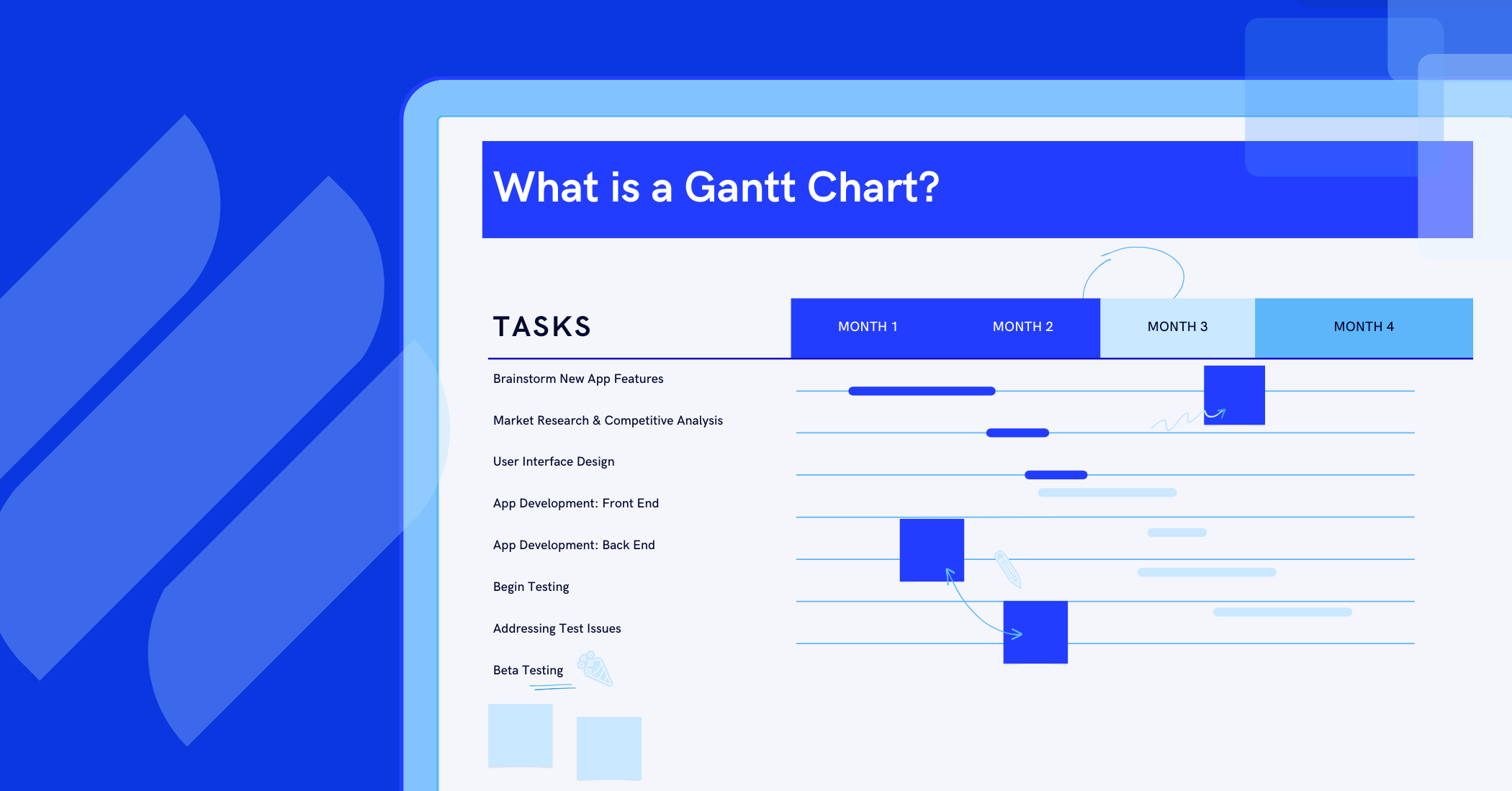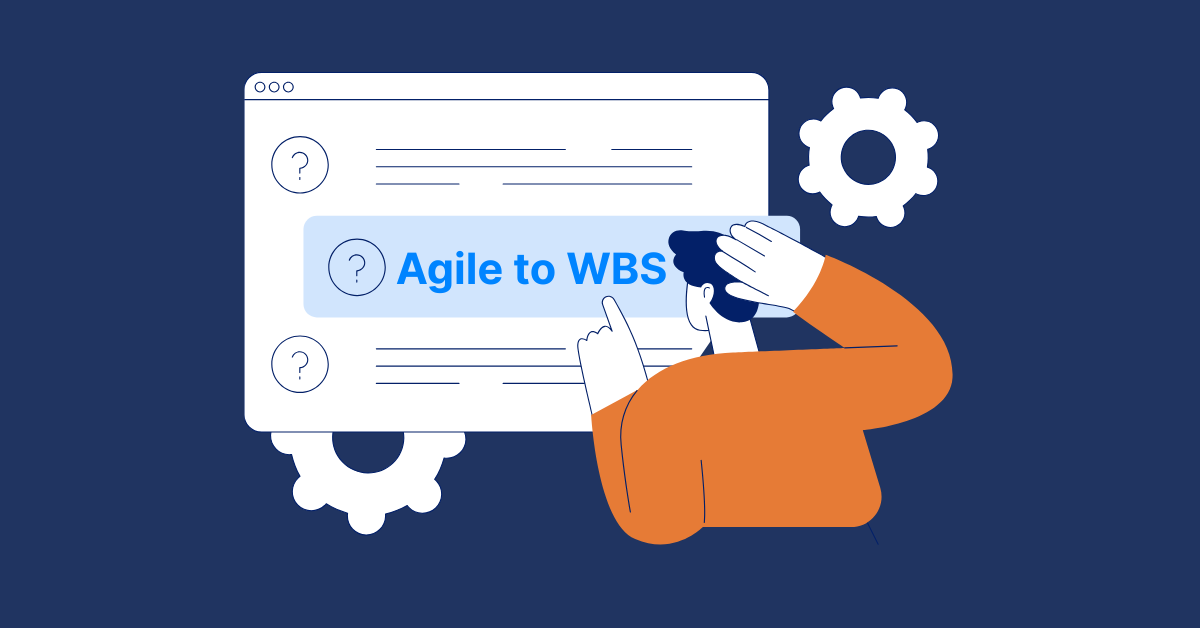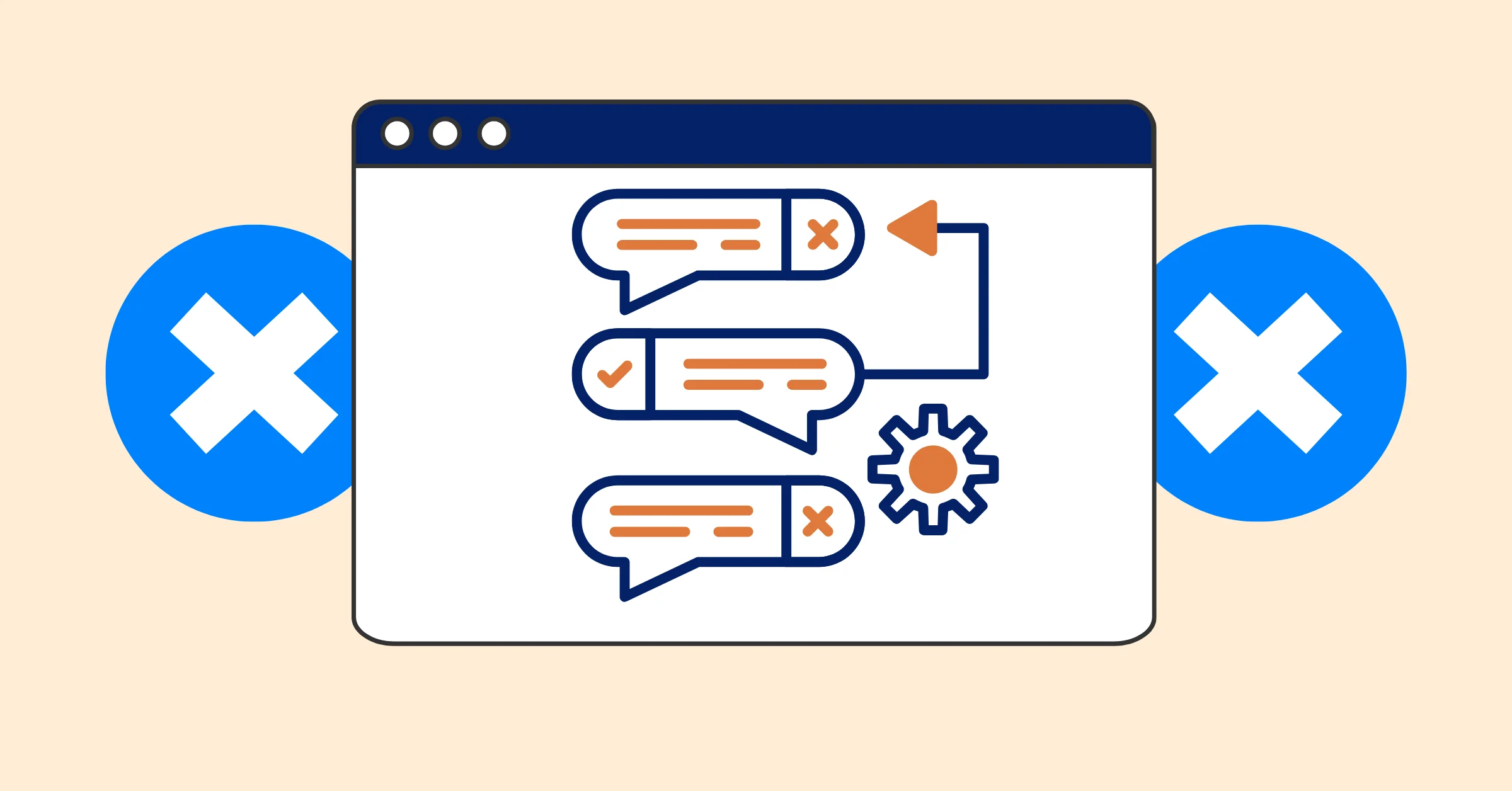Gate Reviews in Project Management: Definition, Benefits, and Steps
Discover how gate reviews can transform your project management process, ensuring alignment, reducing risks, and driving successful outcomes.
Effective project management requires tools that keep projects on track, aligned with goals, and within budget. One such tool is the gate review, a structured checkpoint that ensures projects progress smoothly through their lifecycle. In this blog, we’ll explore what gate reviews are, their benefits, practical steps for implementation, and answer common questions to help project managers, team leaders, and stakeholders leverage this powerful practice.
What Is a Gate Review in Project Management?
A gate review, also known as a stage-gate or phase-gate review, is a formal evaluation point in a project’s lifecycle. It acts like a quality checkpoint, where stakeholders assess progress, risks, and alignment with objectives before approving the next phase. Common in industries like construction, software development, and product design, gate reviews are versatile enough for any project needing structured oversight.
Unlike informal check-ins, gate reviews are deliberate and tied to specific milestones. Stakeholders evaluate deliverables, budgets, timelines, and risks, deciding whether to proceed, revise, or halt the project. Rooted in the stage-gate process developed by Dr. Robert G. Cooper, gate reviews divide projects into phases, each ending with a gate to ensure quality and strategic alignment.
Why Gate Reviews Are Essential
Gate reviews act as guardrails, preventing projects from veering off course. Here’s why they’re critical for effective project management.
1. Smarter Decision-Making
Gate reviews provide a structured space for stakeholders to make data-driven decisions. By reviewing metrics like budget performance, timeline adherence, and deliverable quality, teams can decide if the project is ready to advance. This reduces guesswork and ensures resources are invested wisely.
2. Early Risk Detection
Every project has risks—scope creeps, delays, or resource shortages. Gate reviews catch these issues early, allowing teams to address them before they escalate. For example, a review might reveal a delayed deliverable, prompting a revised timeline or resource reallocation.
3. Alignment with Goals
Projects must support broader organizational objectives, like launching a product or improving efficiency. Gate reviews confirm that each phase aligns with these goals, redirecting or halting projects that stray off course.
4. Greater Accountability
Clear criteria at each gate hold teams accountable for meeting deadlines, staying within budget, and delivering quality work. This fosters collaboration and proactive problem-solving.
5. Optimized Resources
With limited resources like funding or personnel, gate reviews help prioritize high-value projects. Stakeholders can reallocate assets or pause underperforming initiatives, maximizing efficiency.
Key Benefits of Gate Reviews
Gate reviews do more than check boxes, they also drive success. Here are the top advantages for project management.
1. Higher Success Rates
Wellington's 2024 research reveals that only 36% of organizations fully realize the benefits their projects were designed to achieve, underscoring the importance of structured processes like gate reviews to ensure projects meet their intended objectives. By catching misalignments early, gate reviews boost the likelihood of delivering intended outcomes.
2. Stronger Stakeholder Collaboration
Gate reviews unite project managers, sponsors, and team leads, fostering transparency and open communication. Engaged stakeholders are more likely to support project success.
3. Cost Control
Overspending is a common issue. Gate reviews monitor budgets, allowing teams to adjust scope, secure funding, or stop projects before costs spiral.
4. Quality Deliverables
Each gate assesses deliverables against standards. For example, in software development, a review might test a prototype to ensure it meets user needs before full development.
5. Adaptability
Projects face changing conditions like market shifts or new regulations. Gate reviews offer flexibility to pivot strategies or revise plans to stay aligned.
How to Implement Gate Reviews: A Step-by-Step Guide
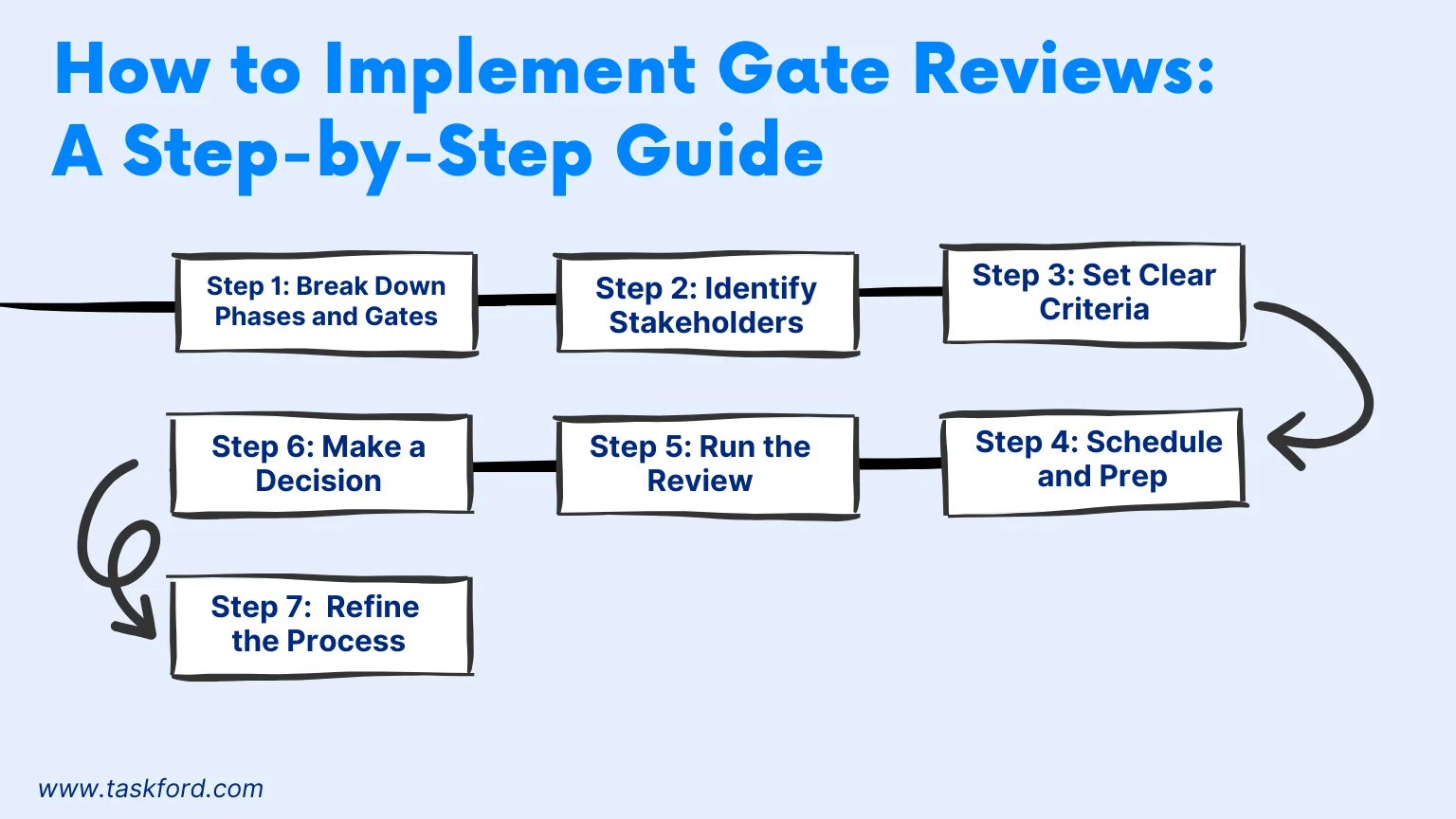
Ready to add gate reviews to your project management process? Follow these practical steps to make them effective.
Step 1: Break Down Phases and Gates
Divide your project into clear phases, like initiation, planning, execution, and closure. Each phase should have specific deliverables and goals. For example:
- Construction project: Site prep, foundation, structural build.
- Software project: Requirements gathering, coding, testing.
- Marketing project: Market research, creative development, campaign execution, and performance analysis.
Assign a gate review at the end of each phase to evaluate progress. Define the gate’s purpose, like approving a plan or assessing deliverable quality.
Step 2: Identify Stakeholders
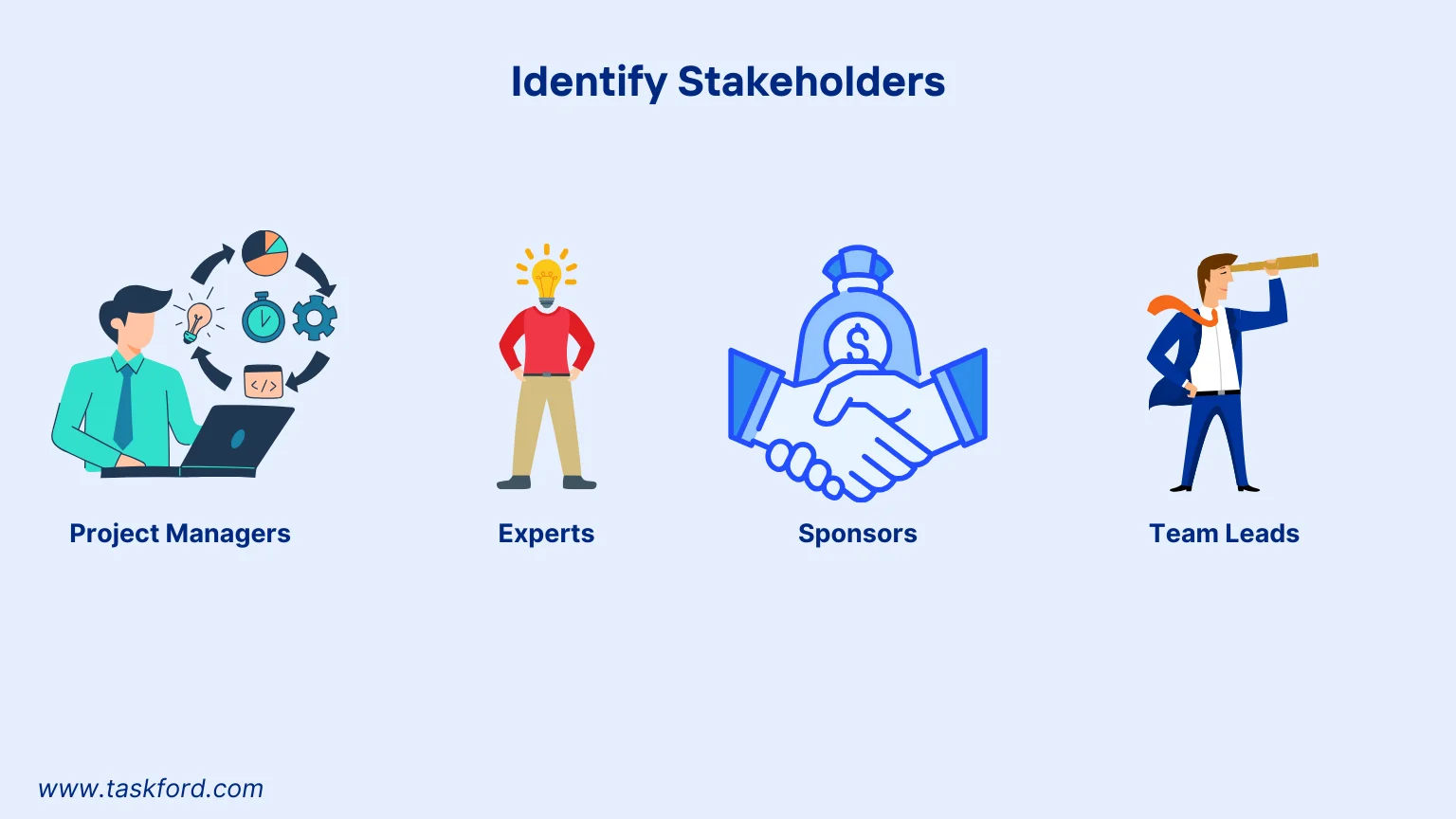
Choose who will participate in gate reviews. Include:
- Project managers to present progress.
- Sponsors with decision-making authority.
- Team leads responsible for deliverables.
- Experts for technical insights.
For a product launch, stakeholders might include the product manager, engineering lead, and marketing director.
Step 3: Set Clear Criteria
Create objective criteria for each gate, tied to project goals. Examples include:
- Budget: Are costs within limits?
- Timeline: Are milestones on track?
- Quality: Do deliverables meet standards?
- Risks: Are risks identified and managed?
Use checklists or scoring systems for consistency. Share criteria with the team to set expectations.
Step 4: Schedule and Prep
Plan gate reviews in advance and share dates with stakeholders. Provide an agenda and key documents, like progress reports or risk assessments. Encourage team members to review deliverables and flag issues beforehand.
Use visuals like Microsoft Excel charts or dashboards to present data clearly during the review.
Step 5: Run the Review
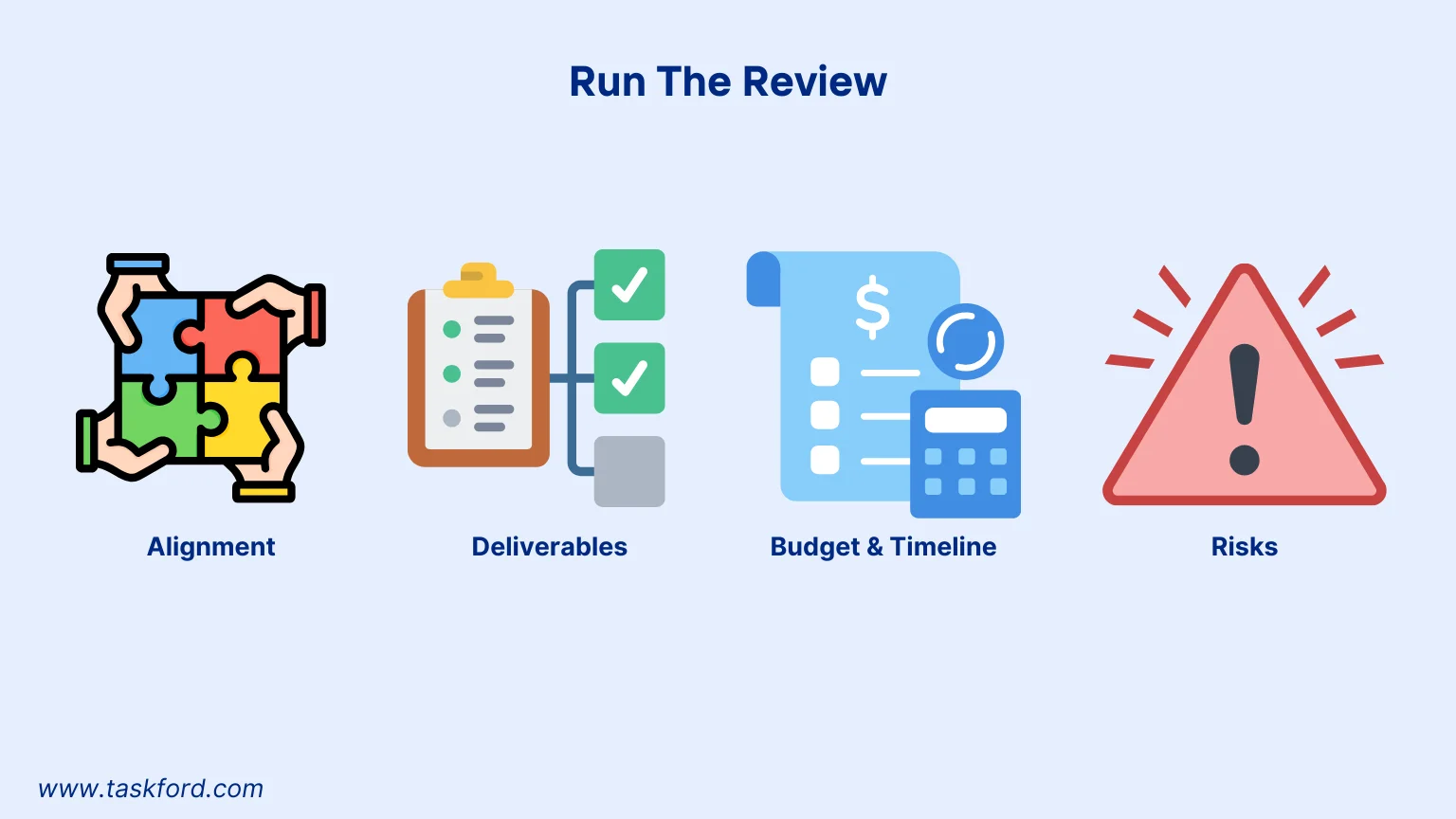
Focus the gate review on evaluating progress against criteria. Discuss:
- Deliverables: Are they complete and up to standard?
- Budget and timeline: Are they on track?
- Risks: What’s new, and how are they being managed?
- Alignment: Does the project still support goals?
Document discussions, decisions, and action items for clarity.
Step 6: Make a Decision
Stakeholders should decide to:
- Proceed: Move to the next phase.
- Revise: Fix issues and re-review.
- Terminate: Stop if the project isn’t viable.
Communicate decisions clearly to the team to maintain transparency.
Step 7: Refine the Process
After each review, assess what worked and what didn’t. Were stakeholders prepared? Was the data clear? Use feedback to improve future reviews, like simplifying reports or adjusting criteria.
Best Practices for Gate Reviews
To make gate reviews shine, follow these tips:
- Stay Focused: Stick to the agenda to avoid tangents.
- Involve the Right People: Include key decision-makers without overcrowding.
- Use Data: Base decisions on metrics, not opinions.
- Document Everything: Record discussions and decisions for accountability.
- Balance Rigor and Flexibility: Be thorough but allow creative solutions.
Overcoming Common Challenges
Gate reviews aren’t without hurdles. Here’s how to tackle them:
- Low Stakeholder Buy-In: Show the value of reviews early to gain support.
- Complex Criteria: Keep criteria simple and focused on key metrics.
- Time Pressures: Schedule reviews at natural project breaks to avoid disruption.
- Team Resistance: Educate teams on how gate reviews improve outcomes.
Frequently Asked Questions About Gate Reviews
1. What’s the difference between a gate review and a status meeting?
A gate review is a formal, decision-focused evaluation at the end of a project phase, assessing deliverables, risks, and alignment to decide whether to proceed. Status meetings are informal, ongoing check-ins to monitor progress without necessarily making go/no-go decisions. Gate reviews are strategic, while status meetings are tactical.
2. How often should gate reviews occur?
The frequency depends on the project’s complexity and timeline. Typically, gate reviews occur at the end of each major phase: initiation, planning, execution, and closure. For a year-long project, you might have four to six gate reviews, spaced every two to three months.
3. Who should attend gate reviews?
Key stakeholders, including project managers, sponsors, team leads, and relevant experts, should attend. For example, a software project review might include the project manager, lead developer, QA engineer, and product owner. Keep the group focused to avoid inefficiency.
(Learn more: What Does A Project Manager Do?)
4. What happens if a project fails a gate review?
If a project doesn’t meet gate criteria, stakeholders may require revisions, such as adjusting the scope or addressing risks, followed by a re-review. In some cases, if the project is no longer viable (e.g., misaligned with goals or over budget), it may be terminated to save resources.
5. Can gate reviews be used in Agile project management?
Yes, gate reviews can adapt to Agile environments. While Agile emphasizes iterative progress, gate reviews can occur at key milestones, like the end of a major sprint or release, to assess deliverables and alignment. They complement Agile’s flexibility by adding structured oversight.
(Learn more: Agile Project Management: The Basics for Beginners)
6. How long should a gate review take?
The duration varies based on project complexity, but most reviews last one to two hours. Complex projects may require longer sessions or multiple meetings. Preparation is key to keeping reviews concise and focused.
7. What tools can support gate reviews?
A comprehensive project management and resource planning tool like TaskFord can track metrics and deliverables by reporting capabilities for reviews. Dashboards or Gantt charts help visualize progress, while collaboration tools like Microsoft Teams facilitate stakeholder communication.
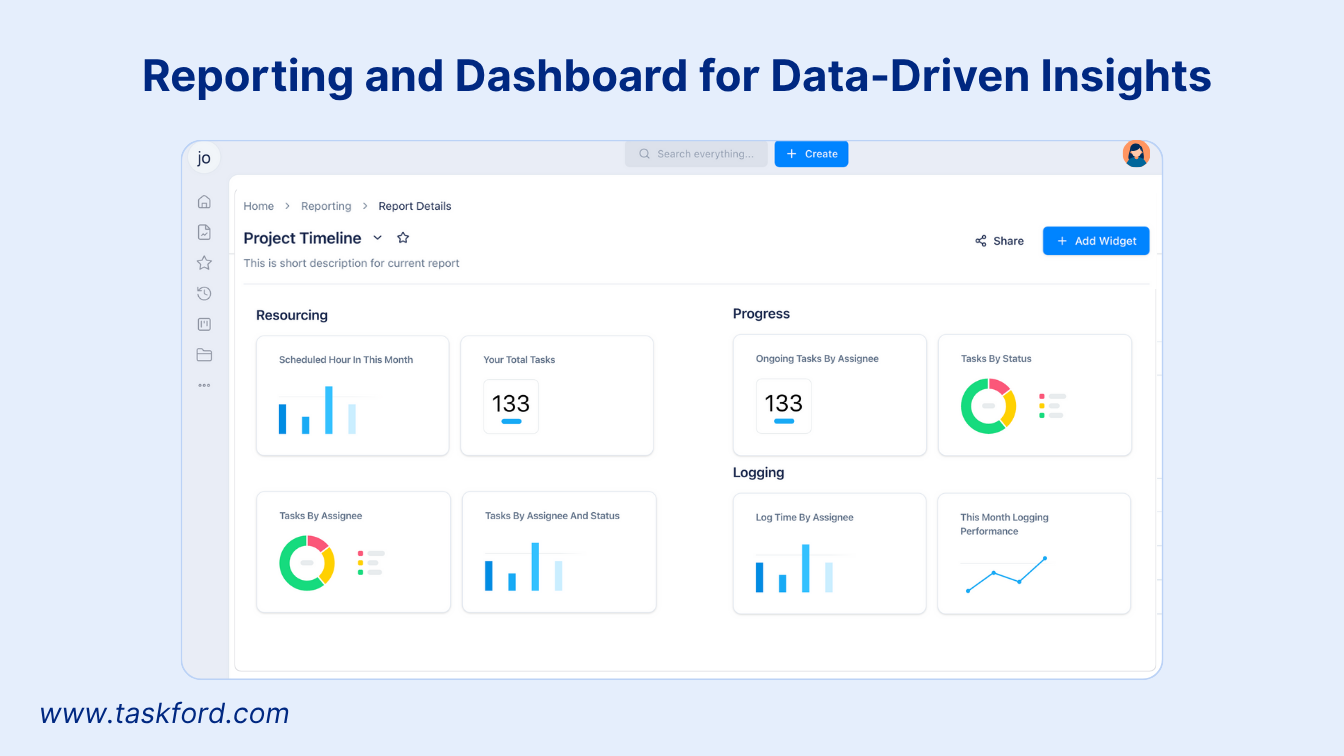
Conclusion
Gate reviews are a cornerstone of successful project management, offering a structured way to assess progress, manage risks, and stay aligned with goals. By breaking projects into phases, setting clear criteria, and engaging stakeholders, you can boost success rates, control costs, and deliver high-quality results.
Whether you’re managing a construction project, software development, or product launch, gate reviews provide the discipline and flexibility needed to navigate complexity. Start incorporating them into your project management strategy today to drive better outcomes and turn challenges into opportunities.
Learn more
- What is Project Management? A Beginner’s Comprehensive Guide 2025
- The Power of Hybrid Methodology: When Agile Meets Waterfall
- Triple Constraints of Project Management: Time, Scope & Cost
Making work simpler,
smarter, and more connected
Join our waitlist and be notified first.

Related Blog
Subscribe for Expert Tips
Unlock expert insights and stay ahead with TaskFord. Sign up now to receive valuable tips, strategies, and updates directly in your inbox.

